| |
| HERMANAS SCULL: Maps of Memory |
|
|
“The Hermanas Scull dedicated themselves to a collaborative art style, broadly classifiable as three-dimensional painting. In so doing, the Hermanas Scull became the first known collective in Cuban art history. Despite their classical arts training, Haydée and Sahara Scull chose to follow in a tradition of other naïve artists such as Henri Rousseau, Grandma Moses, and Red Grooms. Historically, the Hermanas Scull can be seen in league with other South Florida outsider-art visionaries like Purvis Young and fellow 3-D painter, Mario Sanchez, whose idiosyncratic productions have also earned them cult status among collectors, critics, and institutions.”
- Nico Hough
|
|
|
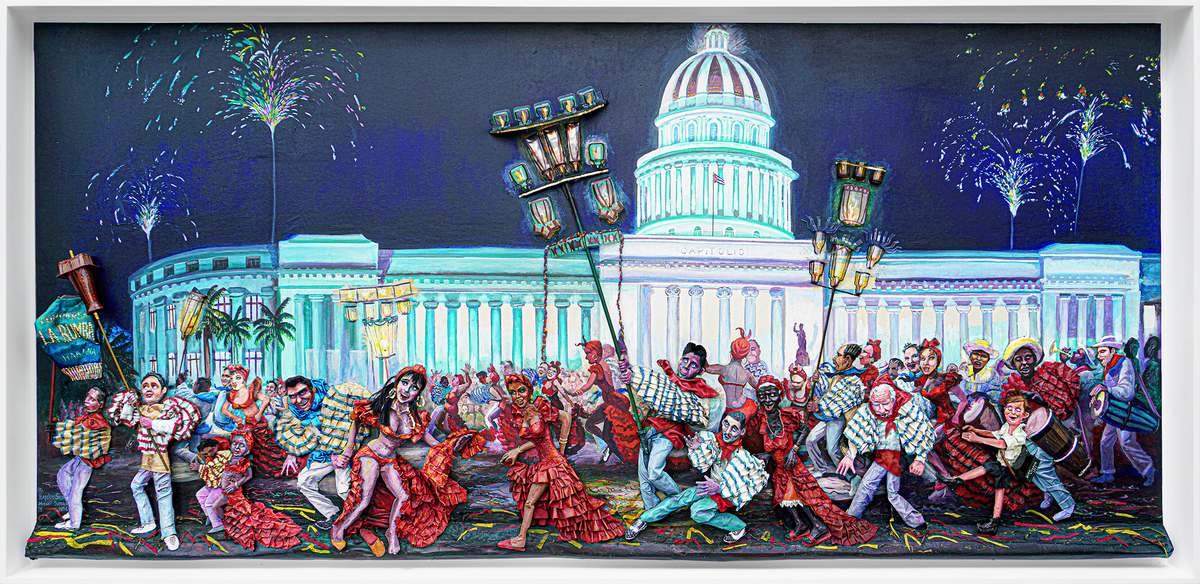 |
Hermanas Scull
La Rumba, Street Dance
(Comparsa La Rumba), 1975-1976
3 dimensional mixed media collage on canvas board
66 1/2 x 144 inches
|
|
 |
Detailed look at the characters.
|
|
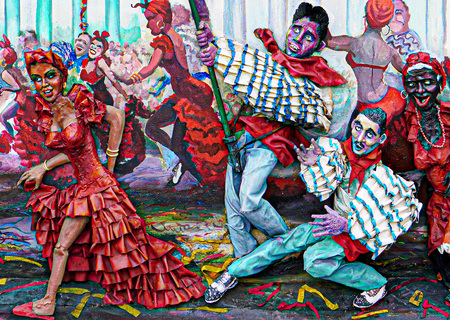 |
Detailed look at the dresses of the characters.
|
|
 |
Detailed look at the lights.
|
|
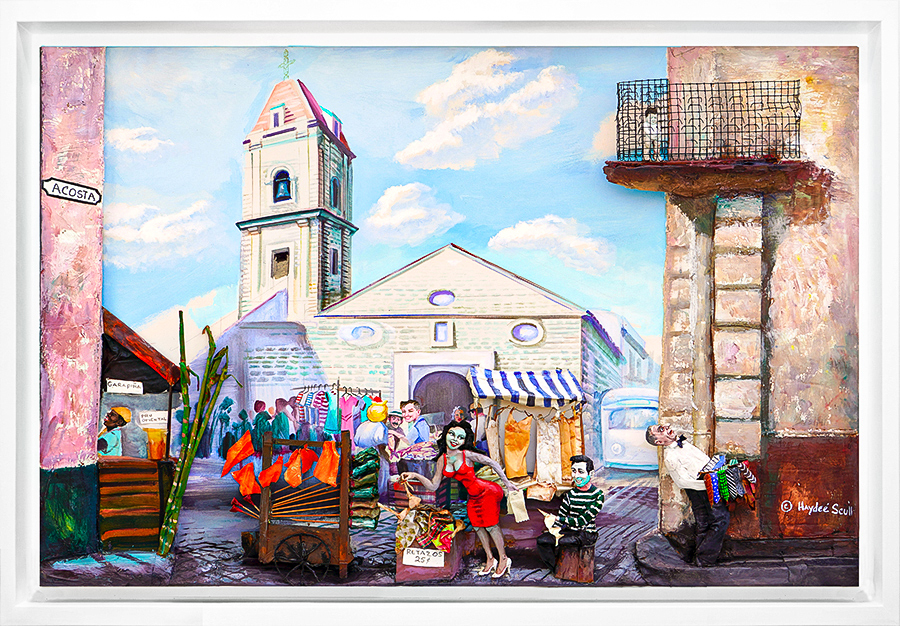 |
Hermanas Scull
Plaza of the Angel
(Plaza del Angel),ca 1985
3 dimensional mixed media collage on canvas board
40 x 60 inches
|
|
The Plaza of the Angel in Old Havana houses the earliest church in the capital city, The Church of Espíritu Santo, dating prior to the year 1620. In its early days and for centuries, masses for the free negro believers were held in this temple that was especially dedicated to the spiritual needs of the Afro- Cubans who lived in and frequented the area. The plaza was also the place where the black population gathered to play their music, dance, and enjoy themselves with the approval of the Bishop and a license extended by the Governor General in 17th century colonial Cuba. In 1772, a Papal bull and a subsequent Royal Certificate issued by King Charles II of Spain, (1773), established the Espíritu Santo as the only "Immune Church" in Cuba. This meant that any persecuted individual could find sanctuary (amparo) in its premises, against the actions of the authorities and of justice. The Church of Espíritu Santo went through a major restoration during the first half of the 20th century thanks to the initiative of Father Angel Gaztelu, "the priest of the Orígenes group," a distinguished poet and a close friend of artists Fidelio Ponce, Portocarrero, and others. Some of the paintings that once belonged to Father Gaztelu's collection are now part of the church's ornamentation.
- Ramón Cernuda
|
|
|
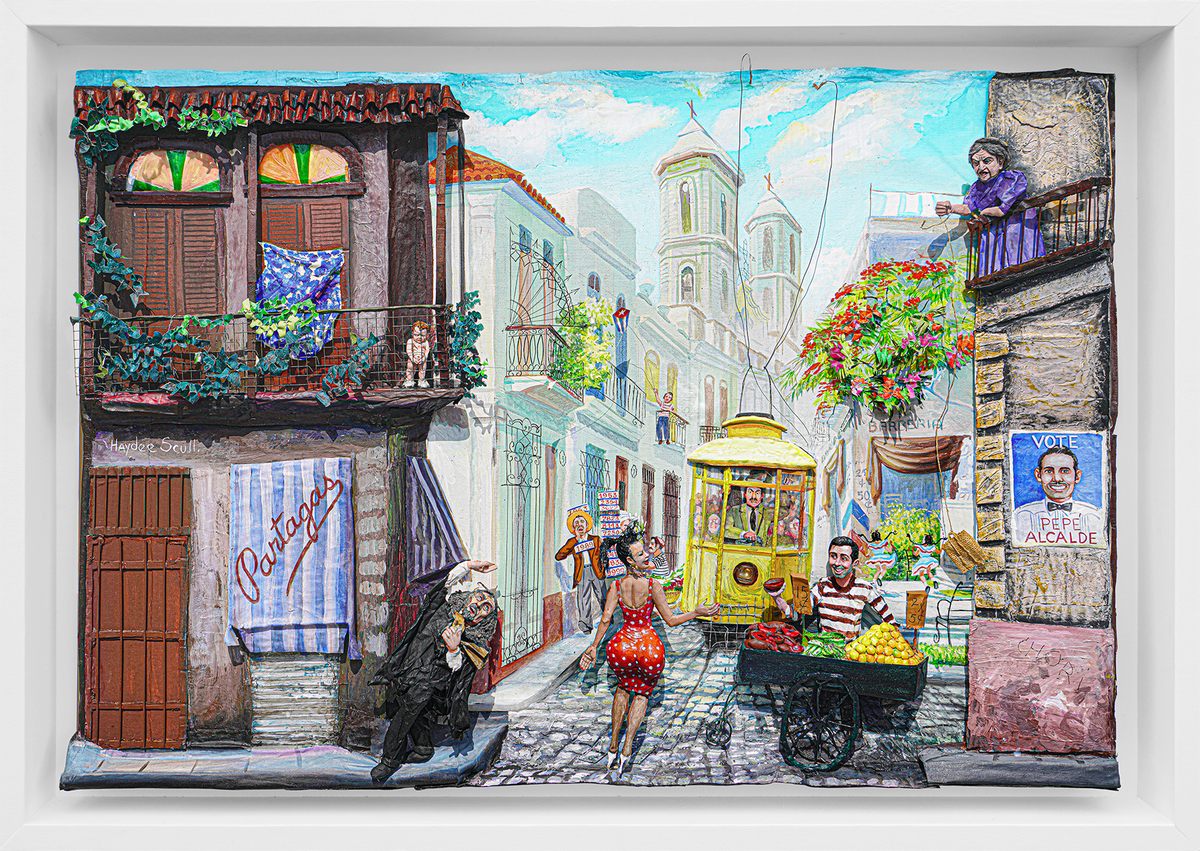 |
Hermanas Scull
Havana Scene
(Escena Habanera), 1989
3 dimensional mixed media collage on canvas board
40 x 60 inches
|
|
|
|
“Together with her sister [Sahara] and later her son Michael, Haydée Scull [unknown-2007] achieved a considerable amount of success… Despite having studied art formally, she was a folk artist, in the best sense of the term. For most of her career, the work was centered on a Cuba that was rapidly receding into memory. Many of her recurring motifs are featured in her work: the Caballero de París [a popular street character in 1950’s Havana], the Street Lottery Ticket Vendor, the Capital Building, as an icon, the well-endowed young lady in a red polka dot dress… each depicting a tableaux of Havana life. Yet these works were as humorous as they were nostalgic.
They were – and are – quintessentially, Cuban.”
- RSNLK, Babalu, November 21, 2007
|
|
|
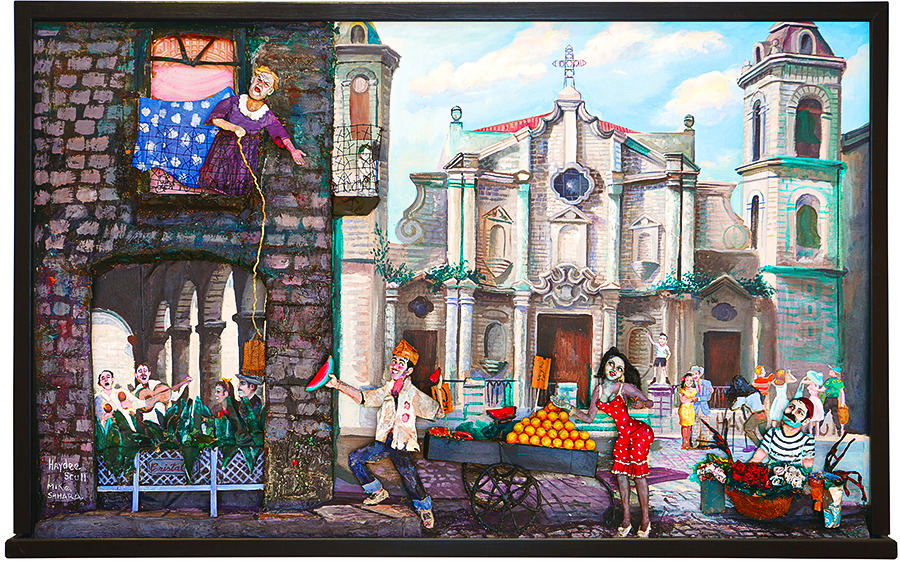 |
Hermanas Scull
Havana Scene
(Escena Habanera), ca. 1985
3 dimensional mixed media collage on canvas board
38 1/2 x 62 inches
|
|
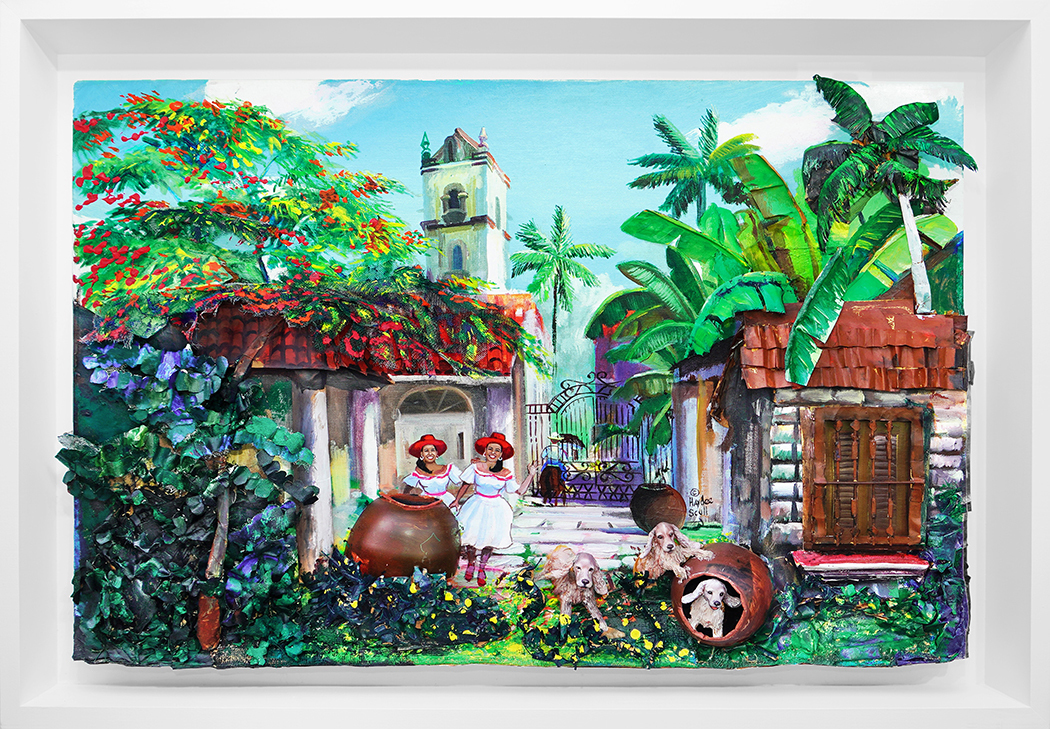 |
Hermanas Scull
Self Portrait of the Twins in the Garden
(Autorretrato de las Gemelas en el Jardín), ca 1980
3 dimensional mixed media collage on canvas board
24 x 36 inches
|
|
Self-Portrait of Twins in the Garden, ca 1980, is one of the few known straightforward self-portraits ever executed by the Scull Sisters. The artwork places them in a lush and idyllic garden in their native Cuba, surrounded by national symbols and a trio of happy animals. Haydée had left her home country for Miami in 1969, followed by Sahara in 1973 – years before the creation of this work. Self-Portrait of Twins in the Garden presents an alternate history that imagines the exiled artists happily roaming in their birthplace, unburdened by the turbulences that had permanently disrupted their way of life decades earlier.
- Nico Hough
|
|
|
 |
Hermanas Scull
Memories of My Old Havana
(Memorias de Mi Habana Vieja), 1995
3 dimensional mixed media collage on canvas board
15 3/4 x 20 inches
|
|
|
| |
| |
| |
| Copyright 2002-2025, Cernuda Arte. All Rights Reserved |
| |
|
| |
